Back to top: Index
ToC (images)
Pages 376-392 are reproduced here through the courtesy of the Cambridge University Press.
The original is found on the Cambridge website.
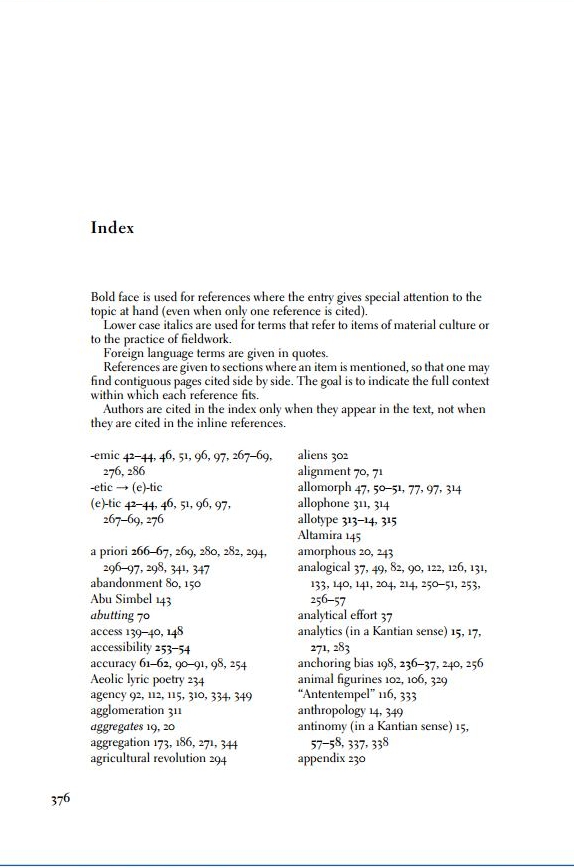
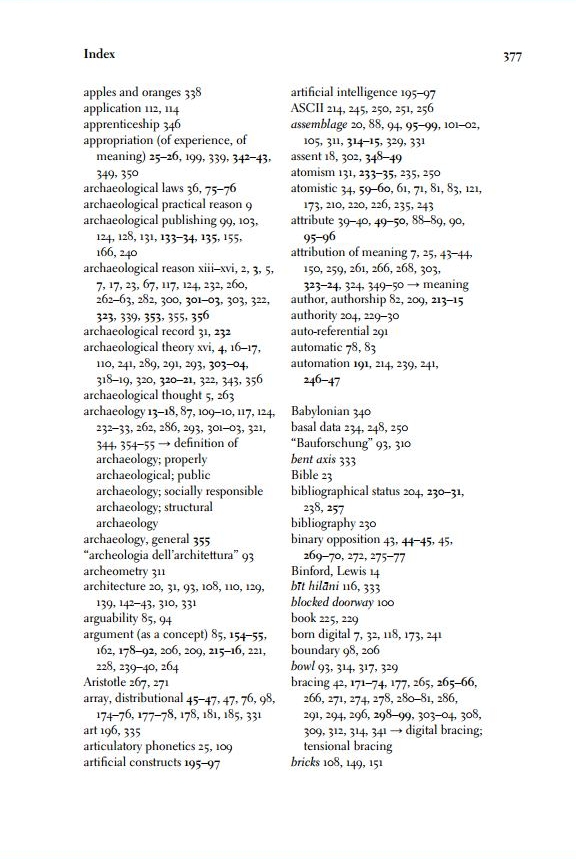
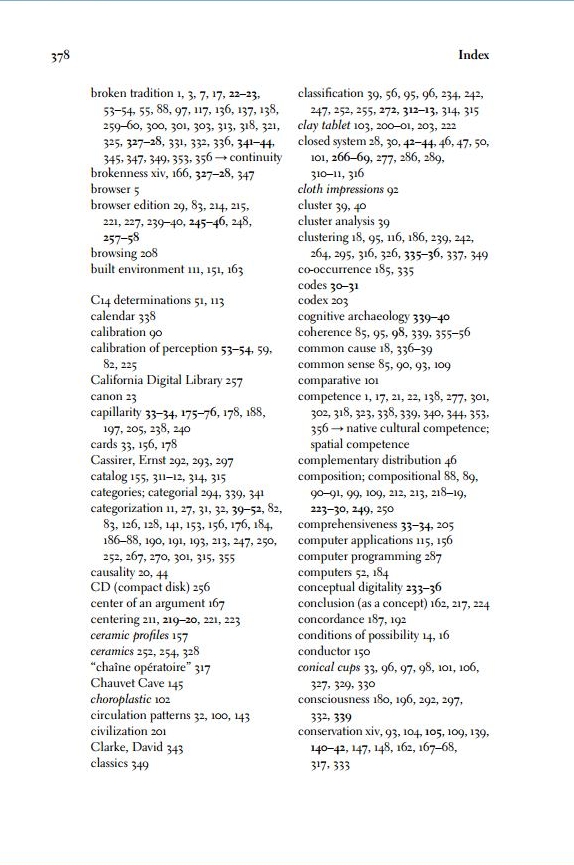
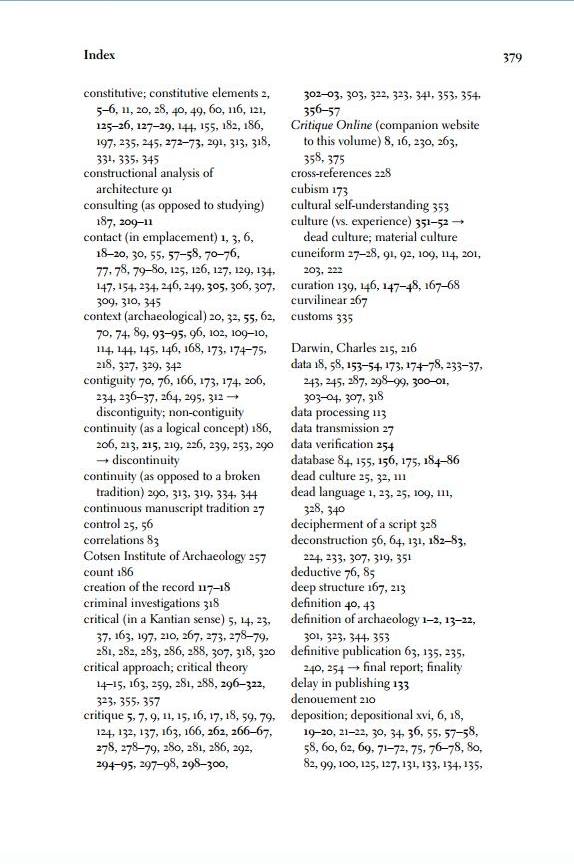
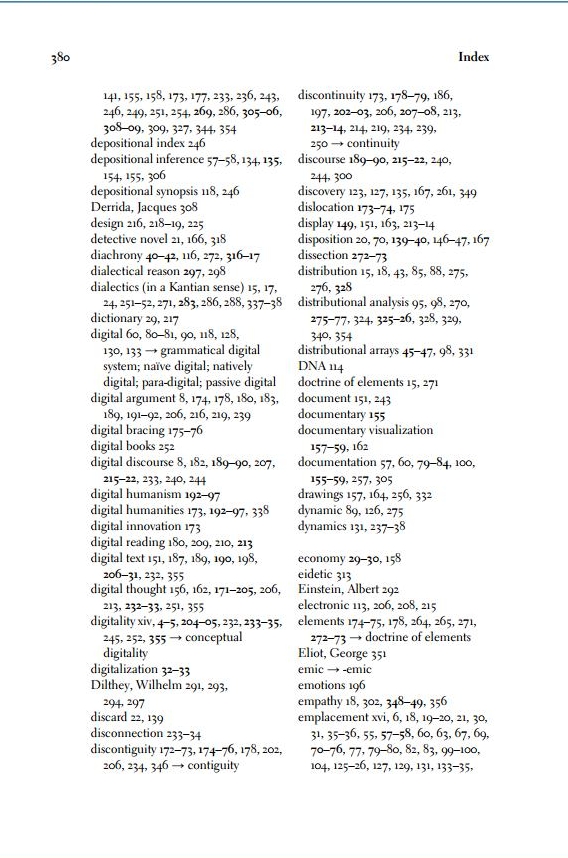
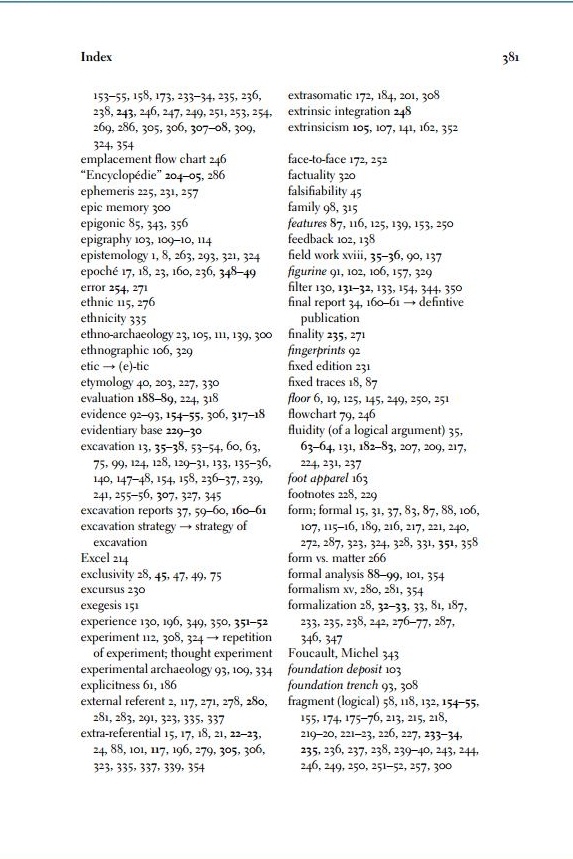
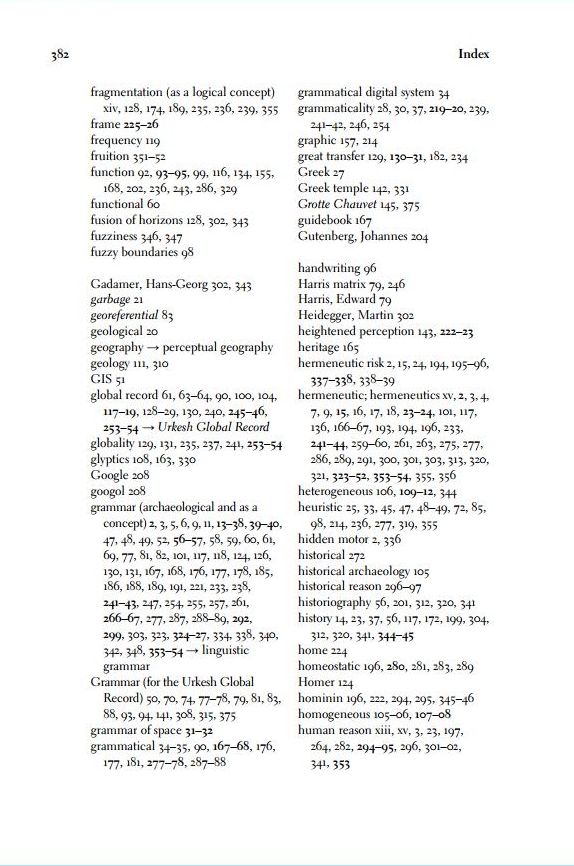
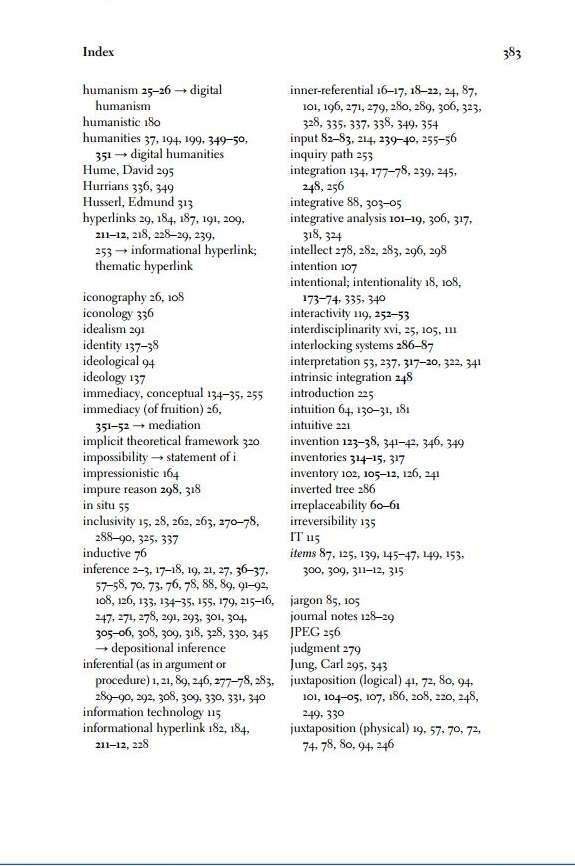
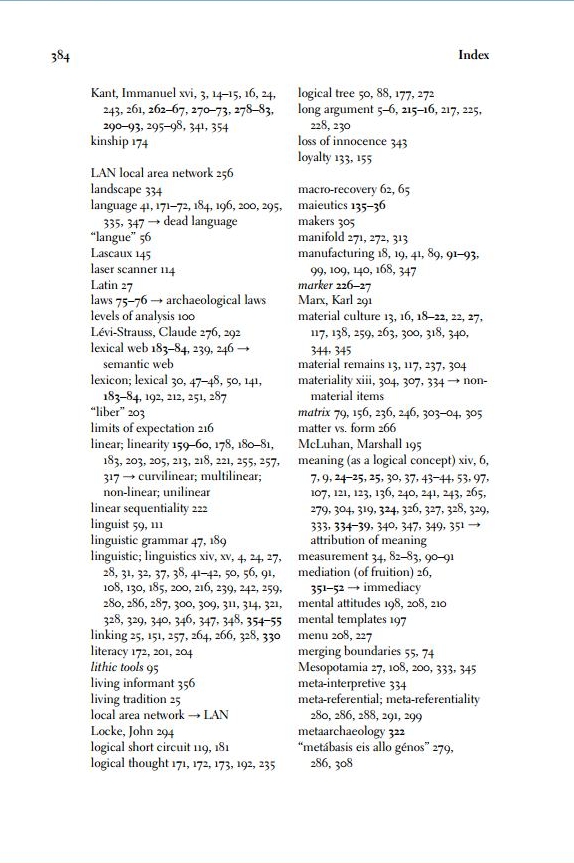
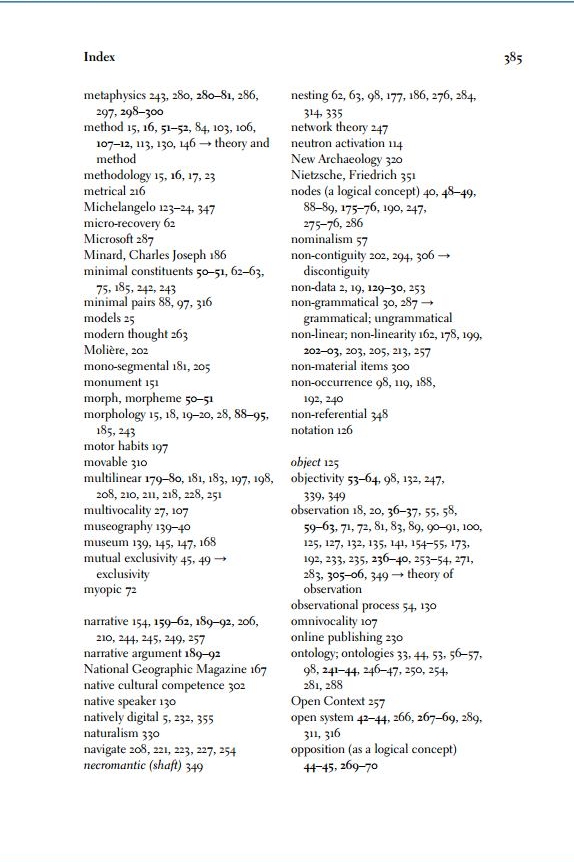
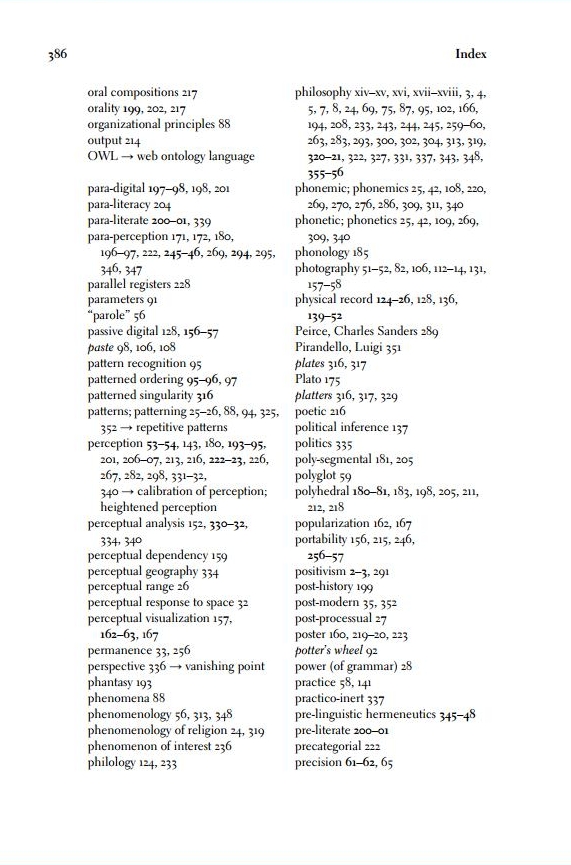
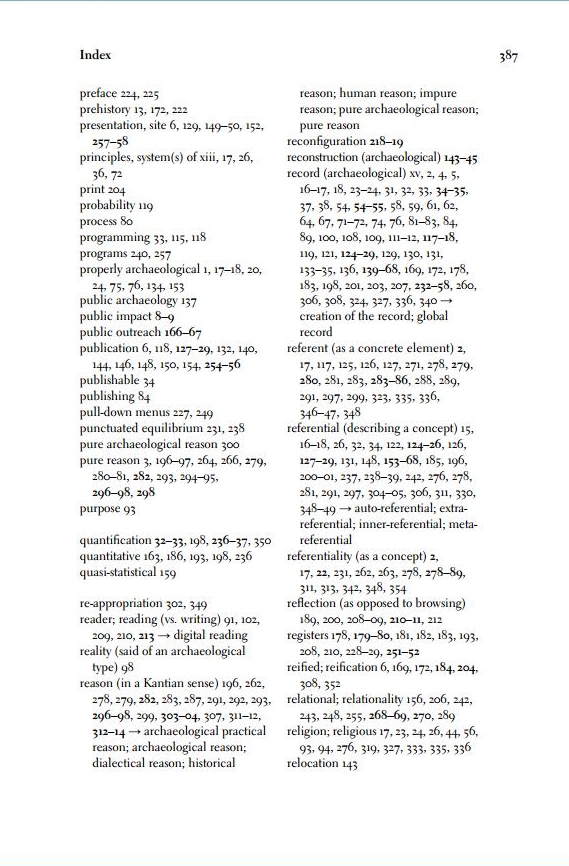
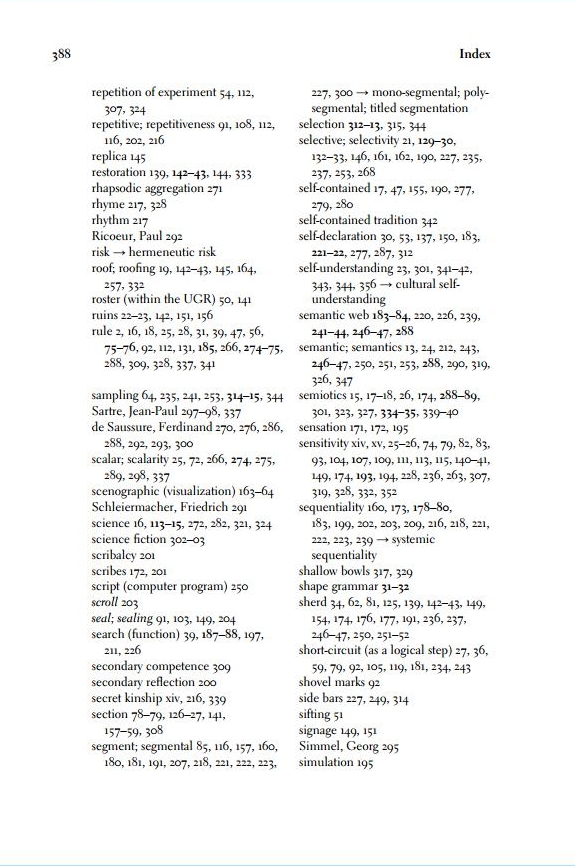
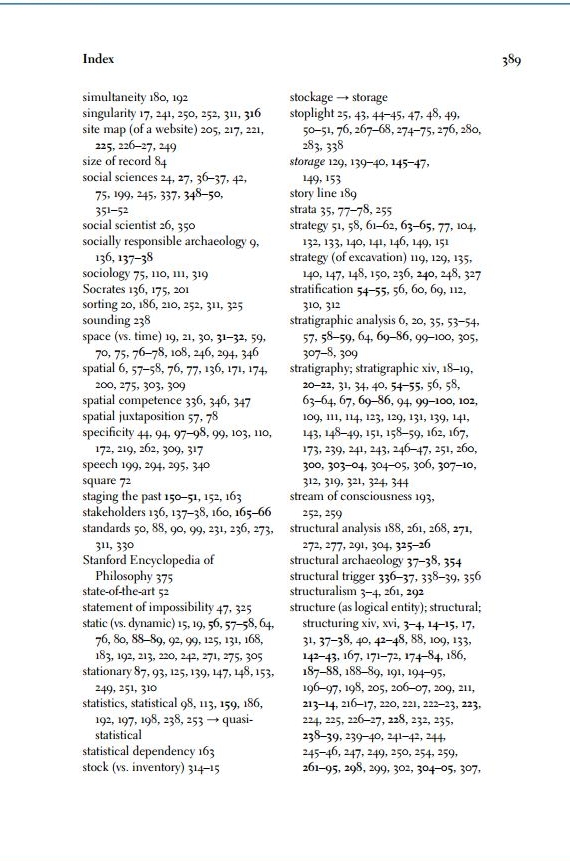
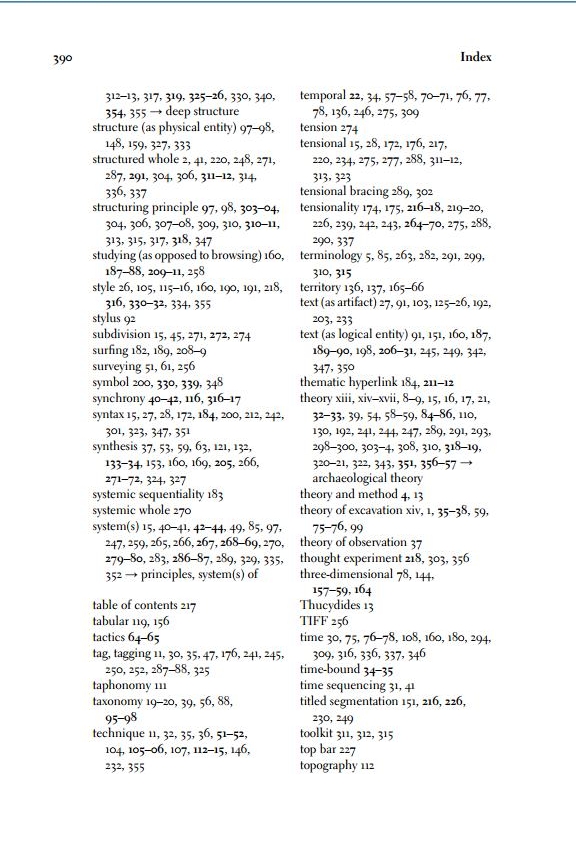
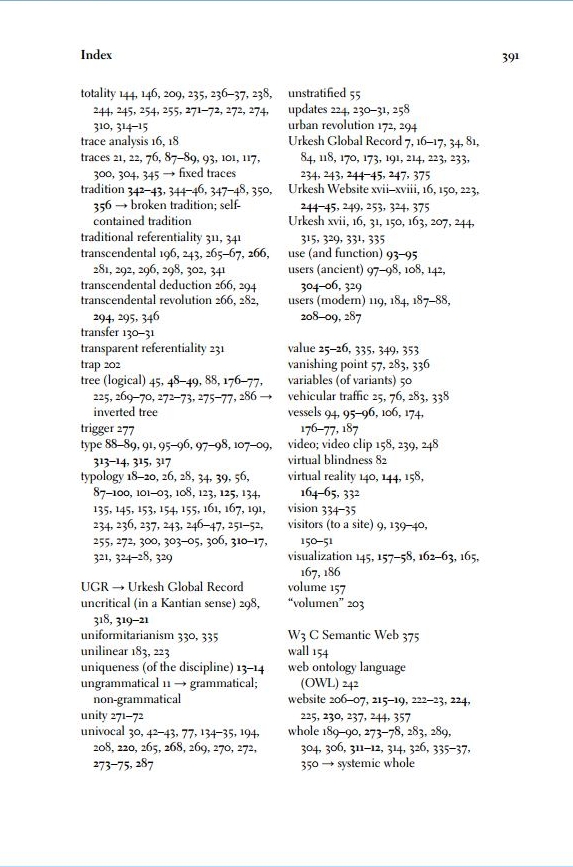
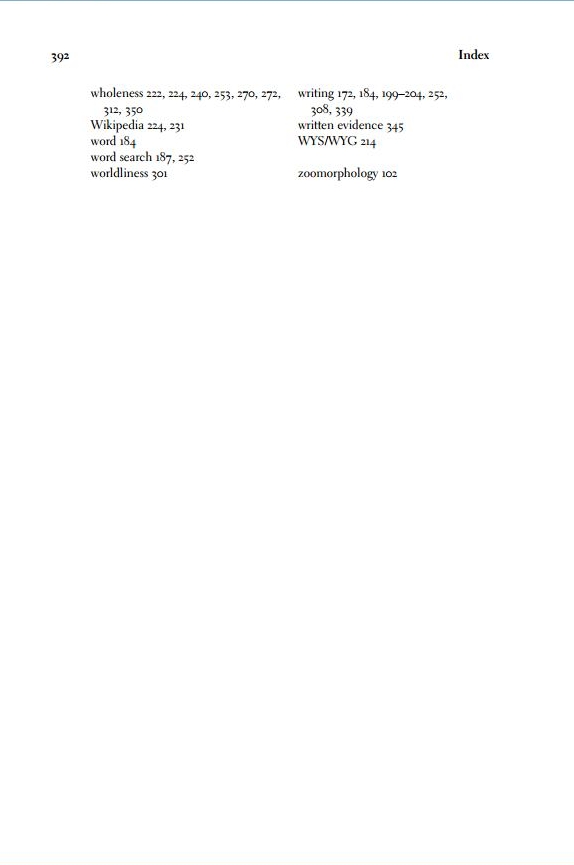
Back to top: Index
ToC - compact
Preface
Chapter 1 - Introduction
PART ONE. Fundamentals
Chapter 2 - Archaeology and Grammar
Chapter 3 - Categorization
Chapter 4 - The search for objectivity
PART TWO. Analysis
Chapter 5 - Stratigraphic analysis
Chapter 6 - Typological analysis
Chapter 7 - Integrative analysis
PART THREE. The Reassembled Construct
Chapter 8 - The invention of a site
Chapter 9 - The physical record
Chapter 10 - The referential record
PART FOUR. The Priviledge Venue
Chapter 11 - Digital thought
Chapter 12 - Digital text
Chapter 13 - The archeological record
PART FIVE. The Wider Frame
Chapter 14 - The relevance of structure
Chapter 15 - The critical approach
Chapter 16 - Hermeneutics
Chapter 17 - Conclusion
Back to top: Index
ToC - detailed
Preface
Chapter 1 - Introduction
1.1 The themes
1.2 The argument
1.3 The companion website
1.4 The public impact
PART ONE. Fundamentals
Chapter 2 - Archaeology and Grammar
2.1 The uniqueness of the discipline: archaeology as archaeology
2.2 A “critical” definition of archaeology
2.3 Primary definition: inner-referential trace analysis of material cultural remains
2.4 Secondary definition: extra-referential analysis of material cultural remains
2.5 Approaches to the two definitions
2.6 Grammar
2.7 The impact of grammar
2.8 A theory of excavation
Chapter 3 - Categorization
3.1 Grammar and categorization
3.2 Definition and definitions
3.3 Synchrony and diachrony
3.4 Structural aspects
3.5 Procedures
3.6 Minimal constituents, morphems, morphs, allomorphs
3.7 Technique and method
Chapter 4 - The search for objectivity
4.1 Objectivity as calibration of perception
4.2 The record: stratification and stratigraphy
4.3 The objectivity of grammar
4.4 Emplacement and deposition: a basic antinomy
4.5 Operational aspects of stratigraphic analysis
4.6 Observation as the foundation of objectivity
4.7 The nature of strategy
PART TWO. Analysis
Chapter 5 - Stratigraphic analysis
5.1 The nature of stratigraphic analysis
5.2 Emplacement: the overriding significance of contacts
5.3 Deposition: time as function of space
5.4 Conceptualization
5.5 Documentation
5.6 In praise of theory
Chapter 6 - Typological analysis
6.1 The elements: features and items
6.2 Archaeological typology
6.3 Formal analysis of single elements: morphology
6.4 Formal analysis of assemblage: taxonomy
6.5 Typology and stratigraphy
Chapter 7 - Integrative analysis
7.1 A secondary typological dimension
7.2 The nature of integration
7.3 Integrative procedures
7.4 Method: inventory specific
7.5 Technique: non inventory specific
7.6 A grammatical approach to style
7.7 Two types of extra-referential integration
7.8 The role of integrative analysis within the Global Record
PART THREE. The Reassembled Construct
Chapter 8 - The invention of a site
8.1 The reconfiguration of the finds
8.2 The physical and referential nature of the record
8.3 The constitutive nature of the record
8.4 The publication as embodiment of the record
8.5 Selectivity and the question of “non-data”
8.6 The great transfer
8.7 The interpretative filters
8.8 The basic presuppositions
8.9 The delay in archaeological publishing
8.10 A definitive publication
8.11 The maieutics of archaeology
8.12 Socially responsible archaeology and the question of identity
Chapter 9 - The physical record
9.1 Disposition
9.2 Conservation
9.3 Restoration
9.4 Reconstruction
9.5 Storage of movable items
9.6 Curation
9.7 Access
9.8 The site as a book
Chapter 10 - The referential record
10.1 Reassembling the “raw” data
10.2 The fragmented evidence and the sequential argument
10.3 The documentation
10.4 The narrative
10.5 Perceptual visualization
10.6 Virtual reality
10.7 The stakeholder, proximate and remote
10.8 Public outreach
10.9 The grammatical dimension
PART FOUR. The Priviledge Venue
Chapter 11 - Digital thought
11.0 Bracing the distance
11.0 Structuring the data
11.0 Structuring the argument
11.0 The implicit argument
11.0 The narrative argument
11.0 Digital humanities and digital dimension
11.0 The para-digital dimension
11.0 The notion of digital thought
11.0 A historical perspective on digital thought
Chapter 12 - Digital text
12.0 The notion of digital text
12.0 The reader
12.0 The author
12.0 Digital discourse
12.0 The heightened perception
12.0 Compositional mechanisms
12.0 Bibliographical status
Chapter 13 - The archeological record
13.1 Archaeological digital thought
13.2 Conceptual digitality of the archeological data
13.3 The role of observation
13.4 “Onthologies” and the semantic web
13.5 An archaeological record in practice
PART FIVE. The Wider Frame
Chapter 14 - The relevance of structure
14.1 Structure
14.2 The Kantian model
14.3 Tensionality – the Kantian intuition
14.4 Tensionality – the implications
14.5 Inclusivity – the Kantian intuition
14.6 Inclusivity – the implications
14.7 Referentiality – the Kantian intuition
14.8 Referentiality – the implications
14.9 A systemic cohesiveness
14.10 The Kantian legacy
14.11 Para-perception and the transcendental revolution
14.12 A critique of “human” reason
Chapter 15 - The critical approach
15.1 Reason and “reasons”
15.2 Pure and impure reason
15.3 Critique, “critical theory”, metaphysics
15.4 Archaeological data
15.5 Archaeological reason
15.6 A critique of archaeological reason
15.7 A critical approach to archaeology
15.8 Referential levels
15.9 Observation and degrees of inference
15.10 A critical approach to stratigraphy
15.11 A critical approach to typology
15.12 A critical approach to interpretation
15.13 Archaeology and philosophy
15.14 Metaarchaeology
Chapter 16 - Hermeneutics
16.1 The question of meaning
16.2 The premise of grammar
16.3 Semiotics within hermeneutics
16.4 The possibility of meaning
16.5 The retrieval of consciousness: cognitive archeology
16.6 The two hermeneutics
16.7 Archeology and history
16.8 A pre-linguistic hermeneutics
16.9 Academic alignments and intellectual domains
Chapter 17 - Conclusion
17.1 Archaeological reason
17.2 Grammar and hermeneutics
17.3 Structural archaeology
17.4 Archaeology and linguistics
17.5 Archeology, digitality and philosophy
17.6 Archeological reason for a living tradition
17.7 Critique and theory
Back to top: Index